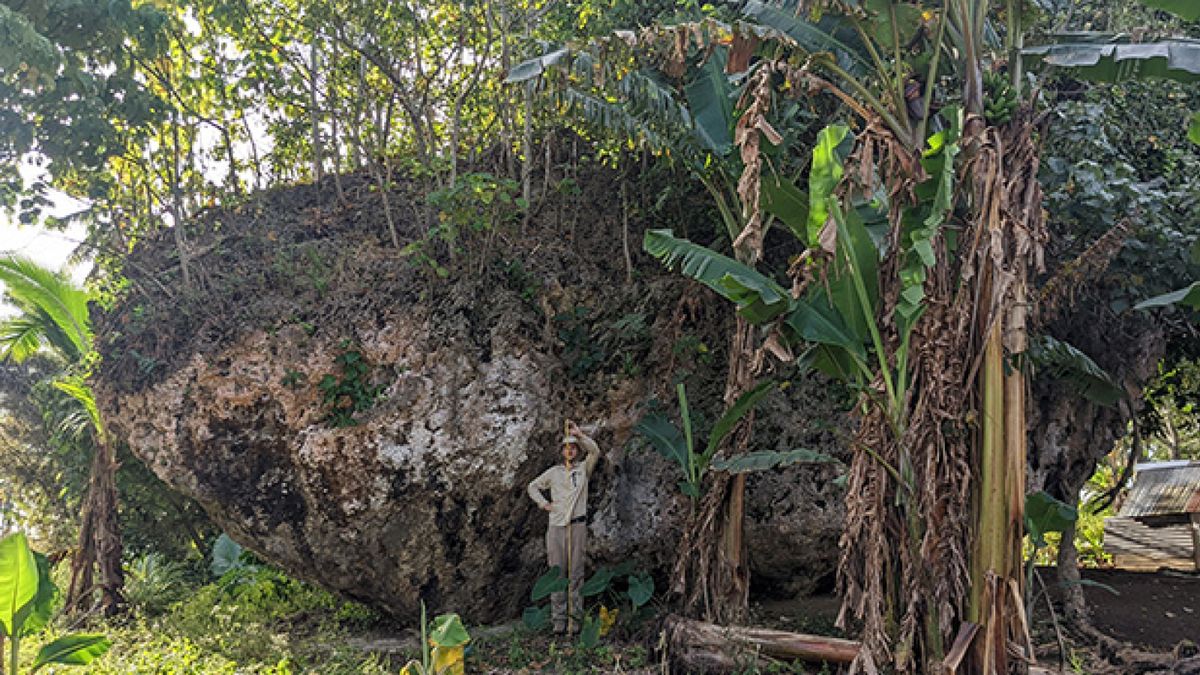Now Reading: Scientists Solve Mystery of Giant Boulder Perched on Tongan Cliff
-
01
Scientists Solve Mystery of Giant Boulder Perched on Tongan Cliff
Scientists Solve Mystery of Giant Boulder Perched on Tongan Cliff

Rapid Summary
- Scientists discovered a massive boulder, named maka Lahi, on the southern coast of Tongatapu, Tonga. It sits 656 feet inland and 128 feet above sea level.
- The boulder measures 45.9 x 39.3 x 22 feet and weighs over 1,300 tons – making it the largest cliff-top boulder known globally.
- Researchers hypothesize that the rock was transported by a tsunami wave around 7,000 years ago, based on isotope dating techniques and geological modeling.
- The tsunami likely originated from seismic activity linked too tectonic plate movements in Tonga’s highly tsunami-prone region near the “Ring of Fire.”
- Events like “coseismic landslides” or earthquakes could have amplified tsunamis in this area historically.
- Similar tsunamis impacted New Zealand’s North Island during this time frame (around 7,240-6,940 years ago).
- Tonga remains vulnerable to tsunamis due to its proximity to tectonic boundaries; it experienced a destructive tsunami in january 2022 that killed six people.
Image:
!Maka Lahi Boulder
Credit: Martin Köhler/UQ
Indian Opinion Analysis
This revelation highlights nature’s immense power while underscoring critical lessons for coastal nations like India regarding disaster preparedness. Though geographically distant from Tonga’s South Pacific region, India’s long coastline faces risks from events like undersea earthquakes or volcanic eruptions that can trigger devastating tsunamis.
The study’s approach – using past evidence and geological analysis – drives home the importance of assessing past extreme events for better hazard readiness today. India can benefit by strengthening early-warning systems for vulnerable areas such as Chennai or Andaman & Nicobar Islands which lie close to active tectonic zones.
Further collaboration with international research teams could provide insights into creating robust risk assessments tailored to local conditions. Understanding natural phenomena like wave transportation models may help Indian authorities mitigate future threats through strategic infrastructure planning along coastal regions facing exposure to such catastrophic scenarios.

























